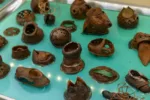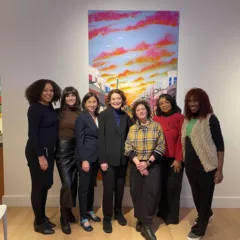“The One Percent”–or more appropriately perhaps,“the 1%”–has become a powerful sign in recent anti-capitalist and anti-austerity social movements. Within the context of the arts community of Philadelphia, the sign means something slightly different. In 1959, the Philadelphia Redevelopment Authority (PRA) established the “Percent for Art” initiative. The initiative–the first in the US–made it mandatory for urban developers who have acquired land through the PRA to commission public art as part of their development projects (you can find the recently amended Percent for Art Program Policy handbook online on the PRA website). In a sense, the Percent for Art initiative proposes a perverse inversion of the recent signification of the pernicious social imbalances of life under the conditions of contemporary capitalism: we–the public experiencing the commissioned art–are not the 99% but rather are an expression of the 1% (whereas in contemporary capitalist society, the 1% are those who have the largest percentage of financial wealth).
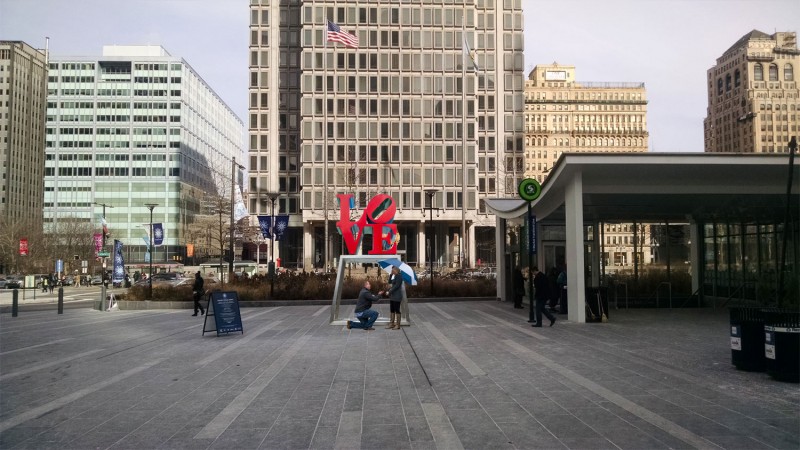
The initiative concerns the re-allocation of funds within a context of the speculative accumulation of capital, that is, the potential profits made by urban developers. In our current historical moment, this brings into sharp relief an objective conflict that shapes our situation on a day-to-day level: the conflict of the accumulation of financial wealth and national economic growth. This conflict can be understood more precisely in light of a strange contradiction: there has been a remarkably sharp increase in the expansion of financial wealth–by which I mean the accumulation of capital by finance corporations and monopolies (banks are the most obvious examples)–without an equally dynamic increase in the economic growth of everything that forms the periphery of finance capital–by which I mean the living standards of those who either work every day or are unemployed. Simply put, the contradiction of wealth-growth concerns a certain unequal distribution of money in the context of municipal government organizations.
But this is not the real problem with an initiative such as Percent for Art. There are two problems that I would like to underscore here: first, the problem of Percent for Art as a production cost of redevelopment projects; and second, as generating experiences of art that reduce art to pure spectacle.
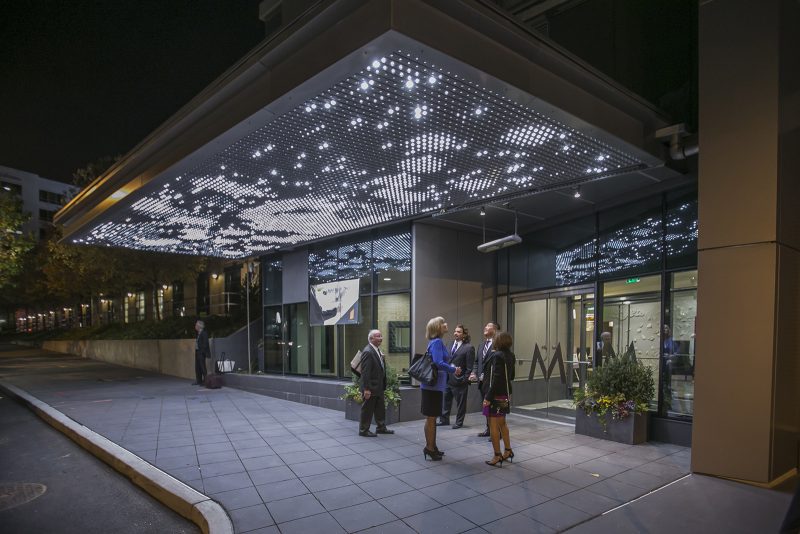
Percent for Art as production cost
How does this objective contradiction of capitalist wealth function in relation the Percent for Art program? In a sense, the program tries to redistribute private funds by setting aside not less than one percent of the total construction cost of every redevelopment project with a construction budget of $100,000 or more for the production of public artworks (the development of public housing involving some form of government subsidy and the construction of single family residencies that do not exceed $1,000, 000 are exempt from the obligatory one percent for art). But one percent of a construction budget is not a simple unit of money extracted by the PRA (as if it were a tax). It is, rather, a calculable unit of expenditure of the production process of redevelopment under the conditions of the capitalist system in which redevelopment occurs and flourishes. That is to say, the one percent for art does not express an amount of monies extracted by a benign municipal government–with intentions of populating Philadelphia with artworks designed to edify the public–against the wishes of developers. Rather, it has become an economic component of the cost of production, a cost component not dissimilar to the cost of the work of man-hours required for redevelopment. As a cost internal to the production process, the public-private opposition is complicated. There is no “private money” set aside by developers which is then made “public” by civic authorities (symbolically registered by public artworks). The movement from private to public is not so clear. Something else is going on.
As a cost in production, urban regeneration treats the commissioned public art as an asset from which surplus value will be potentially extracted. To put it cynically, one could say that public art, understood from the vantage point of its identification as a unit in the production costs of redevelopment, is not meant to serve or address the public in any way–even though, in the most minimal and flimsy sense, it gives the impression that this is precisely what it does. Rather, it is folded into the production process of redevelopment, thus within the logic of the value of exchange. This is an important point to stress if we are to reflect on urban development within the context of generalized commodity production. To develop this further, we will have to say a bit more about the structure of commodities.
Home is a commodity
Urban development is an integral part of the constant regeneration of large-scale cities and urban, metropolitan regions (areas such as the River Pearl Delta in China–supposedly the world’s largest urbanized area). Municipal governments do not carry out renewal alone. Rather, municipal governments sell publicly owned land to developers with plans to generate profit from their prospective development. The money usually comes from rent: developers build living complexes and spaces for local amenities in order to rent them out. Accordingly, apartments are commodities, just like iPhones, Diet Coke or your capacity to work. Thus, they are made within a process of commodity production and, like all commodities have a use value (which means the property that potentially satisfies a human need) and an exchange value (the quantitative measure of value of a commodity in relation to others). As a commodity, they are made with the aim of producing a value greater than their production cost (the surplus or profit).
This means, above all else, that the use value of an apartment is not some immediately recognizable property free from any connection to social, political, or economic systems that determine its meaning. Rather, the use value of an apartment is always permeated by the contexts in which it appears as a valuable thing. This means that things are not first made in a process that simply produces purely “useful things” and then put into a market that turns them into commodities, as if the process of commodification was secondary to the production of use. Commodities are not “things” first, then turned into “commodities” by market dynamics. Rather, commodities are produced in the process of commodity production, a process that generates the relation of use and exchange value as inter-dependently formed. As a use and exchange value, a commodity is never simply just a useful thing: it is not something that simply satisfies a human need but rather is experienced as something that simultaneously presents the potential for the satisfaction of a human need, and gives the impression that it is the source of its own value. In other words, we do not purchase commodities as things that will carry out a particular task that we need to be completed; rather, we experience commodities as things that are exhibited in markets, department stores, magazines, etc as if they promise potentialities that far exceed the satisfaction of need.
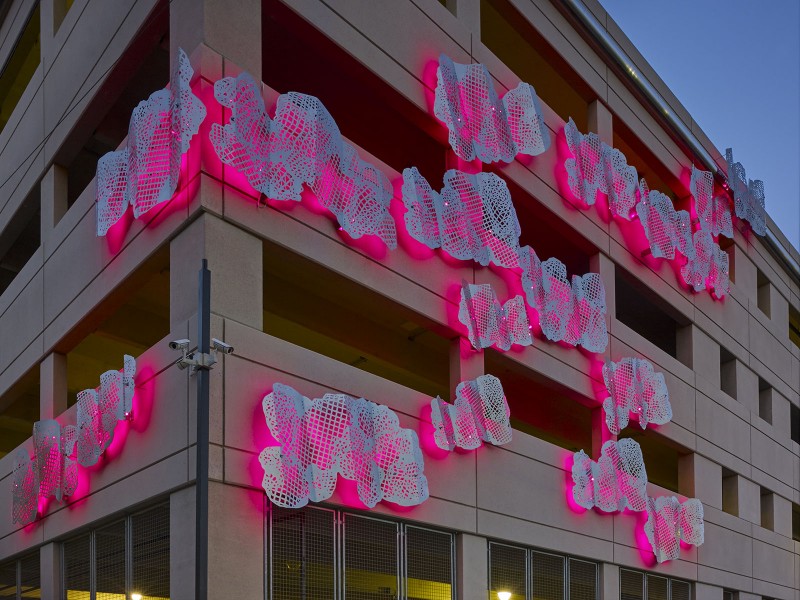
The aesthetics of regeneration
With this sense of the character of the commodity in mind, we can think about the integration of artworks in urban regeneration projects. As a part of the process of regeneration, art is deployed as a manifested public surplus, that is, as a kind of metaphorical profit that “enriches” our everyday existence beyond the limits of what we need to sustain that existence. Urban renewal projects are not ignorant of this quasi-religious quality of art. Indeed, they utilize art as a scrim that provides a certain representation of the area it sits in. Very often, the representations are aesthetic in character. By “aesthetic” I mean that it reaches us through our sensations. Examples of this can be easily discerned in recent Percent for Art projects: “Generative Luminance” by Soo Sunny Park, “Sky Terrain” by Rebecca Rutstein and “Light Matrix” by Leo Villareal.
Producing aesthetic experiences grounded in the perception of color and light connects all three artworks. This is unsurprising. Indeed, there is nothing more spectacular than the production of works that radiate light and color. The power of these works is that they create an ambiance in which individuals can free themselves of their everyday troubles by opening their senses to the aesthetic abundance of color.
As representations of pure radiance, colorful artworks such as Park’s and Rutstein’s can be easily mobilized to reflect the spaces in which they operate. In the case of Park’s work, which is installed in the lobby area of Penn Medicine University City facility, the colorful twinkling glass that makes the structure of the hanging work eases visitors as they enter into a space that can produce extremely difficult experiences. In this context, art functions as a psychological palliative to the visitor’s ailment and anxieties. In and of itself, this is not at all a bad thing. Patients and visitors are troubled and it sometimes helps to ease their anxieties. The problem lies not in the perceived function of the art, but rather in the expansion of that function into a kind of general morally edifying cultural form that presents art as if its potential to edify was self-evident. In other words, the problem is that the art character of public art is not a problem for those who make it or experience it, that is, an unresolved issue that is openly contested. Art is simply presented as having a “civic” function to beautify the surrounding by its quasi-religious power to aesthetically enrich the daily lives of a city’s inhabitants.
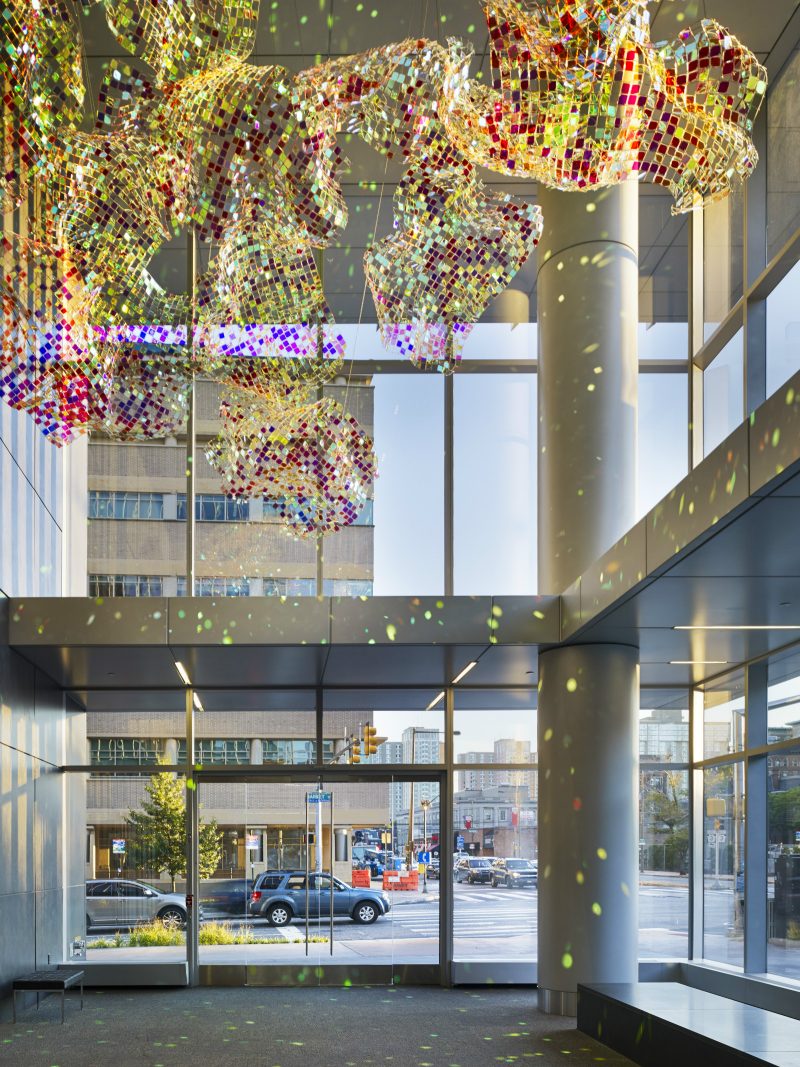
Art as opiate
The edifying character of public aesthetic art is, in some sense, the ideological counterpart of the requirement the policy handbook sets out concerning the relation of the art to its surroundings: “the art/artwork must bear a substantial relationship to the physical, spatial, social, civic, or cultural environment of the redevelopment site.” The “substantial relationship” is rarely about the site prior to its redevelopment, but is always posited in a relation to the speculative site. We do not, for example, have many contemporary public artworks that monumentalize the municipal corruption that plagued Philadelphia in the first half of the twentieth century. Neither do we have public monuments dedicated to the closing down of schools across the city. This is a past that, presumably, the cultural sector of the municipal government would like us to forget.
In light of recent troubles, I am sometimes struck by the limits of the discourse on public art generated by the Percent for Art initiative in the city of Philadelphia. We are told to visit artworks such as Robert Indiana’s “Love” sculpture as if its power as art is a unique cultural experience, totally cut-off from the other socio-political issues of the city that it supposedly monumentalizes. We are also told to experience these artworks as if they were effectively free of the economic conditions that bring them into existence. Indeed, I believe it would be naive to assume that the Percent for Art program constitutes a small-scale victory over the insatiable appetite of the accumulation of capital by urban developers. That is to say, it would be naïve to assume that the program posits art–whether it has reflected on this or not–in direct opposition to the business ventures that ultimately fund it and, more importantly, as a zone of cultural life totally liberated from the mechanisms that fund it. Rather, we have to understand the so-called “public art” produced through the Percent for Art policy as an internal part of the formation of ideological zones of experience in which the individual is meant to spontaneously identify with the pure aesthetic qualities of art in a given site, that is, to identify with public artworks as if their very character as art was undeniably self-evident and clear.
The question that I constantly ask myself when thinking about a phenomenon such as Percent for Art is quite straightforward: what kind of experience does public art funded by Percent for Art produce? I think this question needs to be posed whenever we find ourselves before public art, especially if one considers that, in periods of urban rejuvenation, public art will become increasingly visible.



